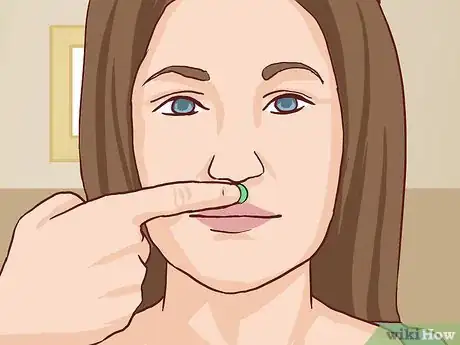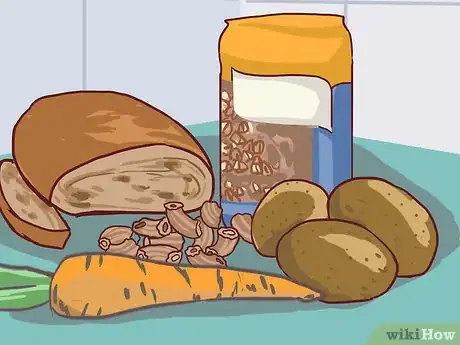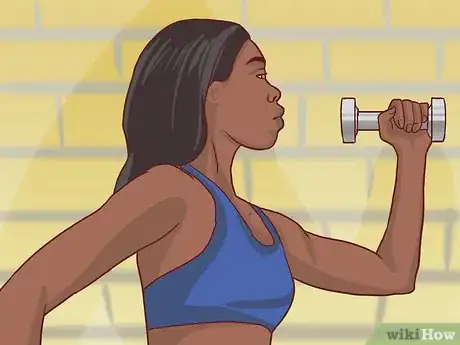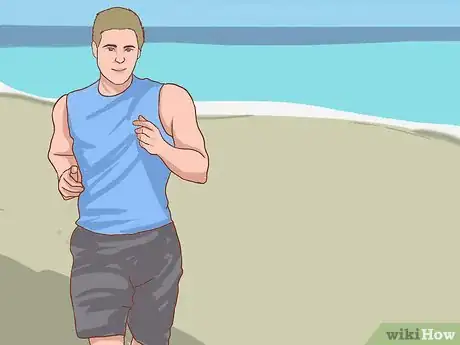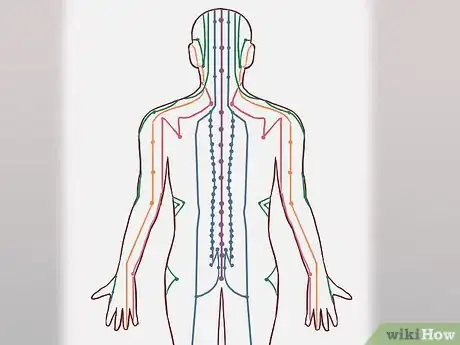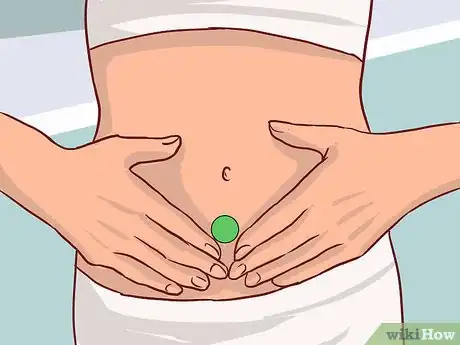This article was co-authored by Karina Klimtchuk, L.Ac., DACM, Dipl. OM. Dr. Karina Klimtchuk is a Licensed Acupuncturist, Diplomate of Oriental Medicine, Faculty Member at Yo San University of Traditional Chinese Medicine, and the Owner of Kai Wellness. She specializes in holistic health, Chinese herbal medicine, and functional medicine. Dr. Klimtchuk also helps patients through emotional and spiritual trauma. She holds a BA in Psychology and Sociology from The University of Massachusetts, Boston, a Master's from Emperor's College in Santa Monica, CA, and a Doctorate of Acupuncture and Chinese Medicine (DACM) from Pacific College of Oriental Medicine.
There are 11 references cited in this article, which can be found at the bottom of the page.
wikiHow marks an article as reader-approved once it receives enough positive feedback. In this case, 84% of readers who voted found the article helpful, earning it our reader-approved status.
This article has been viewed 561,984 times.
In traditional Chinese acupressure, firm pressure is placed on several points of your body to ease medical conditions. This technique is thought to promote weight loss by stimulating points on the body that can relieve pressure on the digestive system. While scientific research supporting the effectiveness of acupressure on weight loss is limited, some studies have found that it may be an effective complement to a healthy diet and exercise in reaching your weight loss goals.[1]
Steps
Applying Pressure to Weight-Loss Acupressure Points
-
1Start by applying acupressure to the acupressure points on the ear. Place your thumb directly in front of the triangular shaped flap of tissue found at the front of each ear. The thumb is used because it covers the most area and will affect all three points.
- Another way to find this point is to place your finger against your jaw and open and shut your mouth. Find the point that has most of the movement in your jaw.
- Apply medium and constant pressure for three minutes to control appetite and hunger and improve digestion.
- If you only want to use one point, use the ear points. It is the only part of the body where three or more acupressure points that control hunger and appetite can be found together.[2]
- Acupressure points SI19, TW21, and GB2 are located around the ear. These have been studied most for weight loss.[3] [4]
-
2Apply pressure to additional acupressure points that promote weight loss. There are a wide variety of other points that can help you reach your weight loss goals.
- GV26 is located between the upper lip and the nose, in the crease or depression (the philtrum). Apply medium pressure for five minutes twice a day. This point can curb appetite and control hunger.
- Ren 6 is found 3 cm directly below the belly button. Use your index and middle fingers to massage this point up and down two minutes twice a day. This point can improve digestion.
- Knee Point ST36 is found 2 inches below the knee cap and slightly off center, towards the outer part of the leg. Apply pressure on this point for one minute with your forefinger. You can know you are in the right spot by flexing your foot — you should be able to feel the muscle move under your finger. Press this point for two minutes every day. This point supports healthy stomach function.
- Elbow point LI 11 is found on the inner side of the elbow crease, near the outer part of the elbow. This point stimulates the function of the intestine by removing excess heat and unwanted moisture from the body. Use your thumb and apply pressure to this point for one minute every day.
- Pressure point SP6 is found 2 inches above the ankle, on the inner side of the leg and behind the bone. Apply pressure for one minute every day with your thumb. Release slowly. This point helps balance fluids.
- The abdominal sorrow points are located beneath your lowest ribs in a straight line down from your earlobes. Press into this point under each rib for five minutes a day. This point can also help relieve indigestion.
Advertisement -
3Try a different point, or points, if one makes you uncomfortable or does not give you the results you want. Stay aware of how you are feeling and responding to the pressure. Each person may respond uniquely, depending on their situation. Don’t overdo it!
- You can use these acupressure points until you have reached your ideal weight and then use them to help maintain that weight.
- There are no known negative effects of this type of acupressure.
Combining a Healthy Diet and Exercise with Acupressure
-
1Follow an anti-inflammatory diet. Certain foods can help you lose weight. In general, these are known as “anti-inflammatory” foods, which are used because having extra weight is an inflammatory condition.[5] [6] To follow this diet switch to organic foods as much as possible. These contain no pesticides or other chemicals, like hormones and antibiotics, that may be related to an increased risk of inflammation.
- Limit the amount of processed and prepackaged food you eat as well. You want to limit the additives and preservatives that can cause some people increased inflammation if they have sensitivity to these additives and preservatives.
- It may take some extra practice and planning, but the closer you can get to cooking from scratch, using whole foods that have not been processed (and therefore retain most of the vitamins, minerals and other nutrients) the healthier you will be.
- A rule of thumb is that if the food is too white, like white bread, white rice, white pasta, it has been processed. Instead, eat whole grain breads, brown rice, and whole grain pasta.
-
2Increase the amounts of vegetables and fruit in your diet. About ⅔ of your total food should be fruits, vegetables and whole grains.[7] Fruits and vegetables contain high levels of antioxidants, which may decrease inflammation.
- Choose brightly colored fruits and vegetables for the highest level of antioxidants. These include: berries (blueberries, raspberries), apples, plums, oranges and citrus fruit (Vitamin C is an excellent anti-oxidant), leafy green vegetables, both winter and summer squash, and bell peppers.
- Fresh is best, but frozen vegetables and fruits can definitely be used.
- Avoid eating vegetables in any sort of creamy sauces that may add fats to your diet.
- Avoid fruits that have sugar or heavy syrup (with added sugars)
-
3Increase the amount of fiber in your diet, as fiber can decrease inflammation. You should be aiming for a minimum of 20 – 35 gm of fiber daily. High fiber foods include:
- Whole grains like brown rice, bulgar wheat, buckwheat, oats, millet, quinoa.
- Fruits, particularly those that you can eat with the skin — e.g. apples, pears, figs, dates, grapes, berries of all kinds.
- Vegetables, especially leafy green vegetables (spinach, mustard, collard, Swiss chard, kale), carrots, broccoli, brussel sprouts, bok choy, beets
- Beans and legumes including peas, lentils, all beans (kidney, black, white, lima)
- Seeds including pumpkin, sesame, sunflower seeds, and nuts including almonds, pecans, walnuts and pistachio nuts
-
4Limit red meat. In fact, try to limit the amount of meat you eat in general. If you do eat beef, make sure it is lean and preferably grass fed, as this meat has the natural ratio of omega-3 and omega-6 fats. If you eat poultry, make sure it is skinless and is raised without hormones or antibiotics (that goes for the red meat as well).
-
5Limit your intake of trans and saturated fats. The American Heart Association recommends for overall health that you avoid all trans fats and limit saturated fats to less than 7% of your total daily calories. Saturated fats are most easily avoided by avoiding butter, margarine, and shortening in your cooking.
- Use olive oil or canola oil instead.
- Trim the fats off any meats.
- Avoid any food that has “partially hydrogenated fats” on the label. These may contain trans fats, even if the label says “0 trans fats”
-
6Increase the amount of fish you eat. Fish is good quality protein and has good amounts of the healthier omega-3 fats. Higher omega-3 fat intake is associated with a decreased level of inflammation. Fish with higher levels of omega-3 fats include: salmon, tuna, trout, sardines and mackerel.
-
7Make sure you include only complex carbohydrates. If you avoid processed foods, you have essentially included only complex carbohydrates. The processing of food breaks down the carbohydrates into the simple carbohydrates. High amounts of simple carbohydrates can increase the levels of inflammation.
-
8Begin exercising on a regular basis. Eating well, eating less, and exercising is the only real way to lose weight and to keep it off. However, the exercise doesn’t have to be, and shouldn’t be, a difficult chore. Start slow by walking more often. Park the car far away, use stairs instead of escalators or elevators, walk the dog, or just plain take a walk! If you want, join a gym and find a fitness coach.
- Lift weights, do cardiovascular workouts, use an elliptical, whatever you enjoy and will stick with.
- Make sure you talk to your physician and make sure you know what you should and shouldn’t be doing. Don’t push it too hard, just push it a bit!
- Find an activity that you enjoy and that fits well into your life. Don’t overdo it, because workouts that are too strenuous can cause you to stop doing them.[8]
- Try using a pedometer to track and monitor how many steps you take through the day. Gradually increase this number over time to increase your activity level.
-
9Get between 75 – 300 minutes a week of moderate aerobic activity.[9] Aerobic activity is anything that increases your oxygen intake and your heart rate. Examples include running, swimming, hiking, walking, jogging, dancing, martial arts and cycling.
- These can also be done inside, using exercise equipment such as stationary bikes and ellipticals, or outside, in a park or in your neighborhood.[10]
Learning About Acupressure
-
1Understand the basic concepts of Traditional Chinese Medicine (TCM). Acupressure and acupuncture utilize various points along 12 basic meridians in the body.[11] These meridians are energy pathways, which are believed to carry “qi” or “chi”, the Chinese terms for life energy. The basic concept is that illness is caused by a blockage in qi. The needles in acupuncture and the pressure in acupressure can unblock these energy pathways and restore the easy and unimpeded flow of qi.
-
2Understand how acupressure can be used to stimulate weight loss. In TCM, weight loss can be encouraged by allowing excess “heat” and “moisture” to be expelled and by supporting the organs of digestion.[14]
- The terms “heat” and “moisture” don’t necessarily have literal meanings. In other words, applying pressure at these points won’t significantly change the temperature of the skin or cause any dampness on the skin. The terms should be understood to indicate imbalances of energy that are viewed as heat and moisture.[15]
- Some studies have indicated that acupressure on the ear points in particular can significantly help people achieve weight loss.[16]
- Another somewhat related technique, the Tapas Acupressure Technique, has shown some positive results for maintaining weight loss, though no significant results for weight loss.[17]
-
3Learn how to apply pressure on acupressure points. Unless the point is on the center of your body, make sure you apply pressure on both sides for the same amount of time. The amount of pressure is generally light to medium-- find a level of pressure you are comfortable with. Never press hard.
- Think of three levels of pressure — light pressure is the amount of pressure it would take for your finger to depress your skin slightly and moves the skin around the pressure point slightly. You won’t feel a pulse or bone —but will feel a muscle moving under the skin. Medium pressure depresses the skin more — and in areas where the skin is thin (e.g. around the ear) you should feel some bone and will feel joints and muscle moving. You may also feel a pulse around (for example) around the knee, elbow or ankle points.
- You can apply acupressure anywhere: at work, at school, at home, or after (or during) a shower. Though it is usually best to be in a quiet and peaceful environment, it is not absolutely necessary.
Acupressure Points and Foods to Eat and Avoid for Weight Loss
References
- ↑ https://www.ncbi.nlm.nih.gov/pmc/articles/PMC6617497/
- ↑ http://www.holisticonline.com/remedies/weight/weight_acupressure-for-weight-control.htm
- ↑ Hsieh, C. H., Su, T., Fang, Y., & Chou, P. (2012). Efficacy of Two Different Materials used in Auricular Acupressure on Weight Reduction and Abdominal Obesity. American Journal Of Chinese Medicine, 40(4), 713-720.
- ↑ Hsieh, C. H., Su, T., Fang, Y., & Chou, P. (2011). Effects of Auricular Acupressure on Weight Reduction and Abdominal Obesity in Asian Young Adults: A Randomized Controlled Trial. American Journal Of Chinese Medicine, 39(3), 433-440.
- ↑ http://www.ncbi.nlm.nih.gov/pubmed/21219177
- ↑ Greenberg,AS., Obin,MS., Obesity and the role of adipose tissue in inflammation and metabolism. AmJ Clin Nutr.(2006) 83(2) 461S-465S.
- ↑ http://health.usnews.com/best-diet/anti-inflammatory-diet
- ↑ http://www.mayoclinic.org/healthy-lifestyle/weight-loss/in-depth/exercise/art-20050999
- ↑ http://health.usnews.com/best-diet/anti-inflammatory-diet
- ↑ http://www.medicinenet.com/aerobic_exercise/article.htm
- ↑ Karina Klimtchuk, L.Ac., DACM, Dipl. OM. Licensed Acupuncturist & Diplomate of Oriental Medicine. Expert Interview. 25 August 2021.
- ↑ Karina Klimtchuk, L.Ac., DACM, Dipl. OM. Licensed Acupuncturist & Diplomate of Oriental Medicine. Expert Interview. 25 August 2021.
- ↑ Karina Klimtchuk, L.Ac., DACM, Dipl. OM. Licensed Acupuncturist & Diplomate of Oriental Medicine. Expert Interview. 25 August 2021.
- ↑ Hsieh, C. H., Su, T., Fang, Y., & Chou, P. (2012). Efficacy of Two Different Materials used in Auricular Acupressure on Weight Reduction and Abdominal Obesity. American Journal Of Chinese Medicine, 40(4), 713-720.
- ↑ Hsieh, C. H., Su, T., Fang, Y., & Chou, P. (2011). Effects of Auricular Acupressure on Weight Reduction and Abdominal Obesity in Asian Young Adults: A Randomized Controlled Trial. American Journal Of Chinese Medicine, 39(3), 433-440.
- ↑ Hsieh, C. H., Su, T., Fang, Y., & Chou, P. (2011). Effects of Auricular Acupressure on Weight Reduction and Abdominal Obesity in Asian Young Adults: A Randomized Controlled Trial. American Journal Of Chinese Medicine, 39(3), 433-440.
- ↑ https://www.youtube.com/watch?v=Hc5_mdo51wM
About This Article
To use acupressure for weight loss, start by finding the accupressure point on your ear, which is the triangular flap of tissue located at the front of each ear. Then, apply medium and constant pressure for 3 minutes with your thumb, which may help control your appetite. Alternatively, apply medium pressure to the crease between your upper lip and nose for 5 minutes a day, which can help curb your appetite. Additionally, make sure to exercise and eat a healthy diet with plenty of fruits and vegetables, since you can't lose weight with acupressure alone. For tips from our Medical co-author on how to adopt an anti-inflammatory diet, read on!

